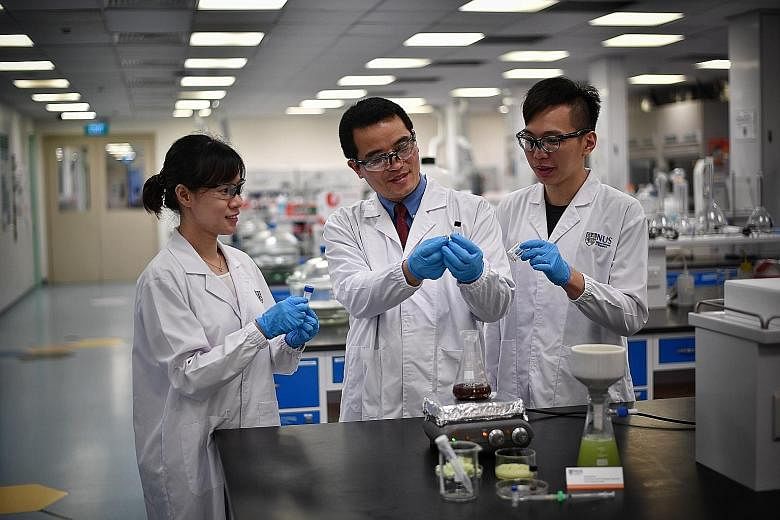Previously undetectable traces of a common vegetable pesticide have been extracted by local researchers using a new screening technique.
Their method makes use of tiny nanoparticles to grab molecules of pyrethroids, a group of synthetic pesticides that are used to protect crops from insects. In large amounts, the compound can cause cancer.
The new method is 10 times more sensitive than conventional methods and can detect concentrations of the pesticide of as low as 0.02 nanogram in a gram of vegetables.
Lead researcher Yang Hongshun, a food scientist with the National University of Singapore, said consumers are now more concerned about chemicals in their food, and will want to know if there are traces of pesticides even if they are within safety limits.
"This method can be used by food safety authorities to check the authenticity of 'pesticide-free' claims," said Assistant Professor Yang, who is with the NUS Food Science and Technology Programme.
He said food items contain small amounts of pesticides which are not harmful to humans. "But there is an accumulative effect and people in general are living longer, so the accumulation period is longer. There are no known consequences but it would be better if the detection of pesticide is more sensitive."
His team studied the use of nanoparticles to detect traces of the pesticide in vegetable oil and 10 types of vegetables, such as lettuce. After blending the vegetable samples, the liquid portion of the mixture was extracted and mixed with the nanoparticles.
The nanoparticles, which can be reused about 30 times, act as "micro magnets", attracting and separating the pyrethroid molecules from other molecules for analysis.
The new method is also able to screen for pesticides in a given sample three times faster as the nanoparticles are designed to zoom in on a particular molecule. Conventional methods of detection, such as through column filtration, are less specific and more time consuming.
Next, the team is looking at designing nanoparticles that can home in on other molecules, including toxins produced by fungus, said PhD student Yu Xi, who was also involved in the research.
The team is currently in talks with vegetable farmers, distributors and a food safety facility on commercialising the technique.
Professor William Chen, director of the Food Science and Technology Programme at Nanyang Technological University, said the NUS team's technique is an improvement over current methods to detect pyrethroid-derived pesticides.
"It would be helpful to expand the detection range to other commonly used classes of pesticides," he said.

